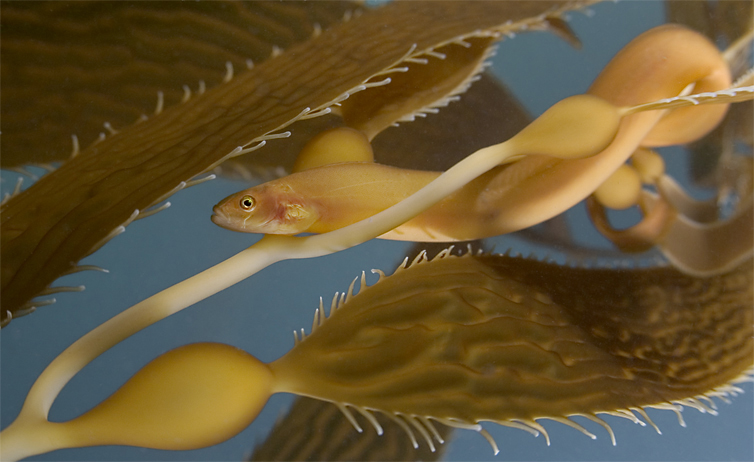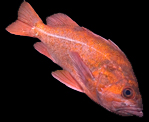
December 4, 2005

One of the more cryptic denizens of the Monterey bay, kelp gunnels (Ulvicola
sanctaerosae) like this one often display remarkable tail dexterity. If one
is fortunate enough to see this animal at all, it can be quite difficult to
visually trace it from end to end due to it's ability to wrap its tail in
improbably tight coils around stipes of kelp. Small animals that hide in giant
kelp almost universally use the same, very simply, mechanism to deter predators
(and photographers). When discovered, they simply move to the back side of the
stipe on which they're resting. Easy for them, they only have to move a tiny
bit, but a predator/photographer has to move several feet in order to regain
their original view. Of course, what works once, works twice or three times as
well, and you can imagine who usually gets the upper hand in this exchange. I've
tried rolling the kelp's thallus in my fingers to present subjects to the
camera, it doesn't work as well as you might think. The classic solution to this
problem is to place a hand on the backside of the stipe to scare the subject to
the camera side. This works somewhat for wide angle shots if you can get your
scaring hand out of the shot before the subject slips behind the stipe again. It
doesn't work well for macro since it's quite difficult to keep the camera rig
steady with one hand.
"Tanker Reef", Monterey Bay, California
December 4, 2005




